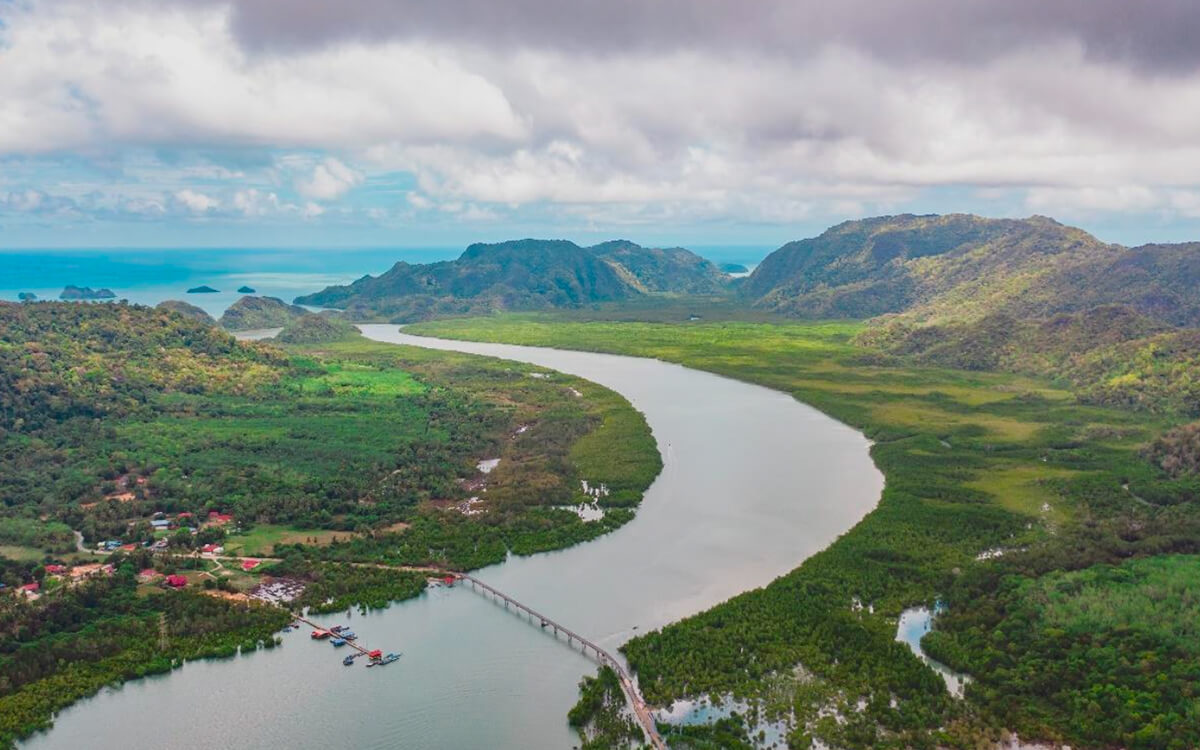A Glimpse at Langkawi’s Sisters: Pulau Tuba and Pulau Dayang Bunting
Bestowed with nature’s marvel, Malaysia is often in travellers’ bucket list. While the manufacturing sector is the main driver of its’ economy, tourism is the third-largest contributor to the nation’s Gross Domestic Product (GDP). A developing nation that is growing fast and catching up to the pace of other Asian peers. With a low poverty rate of 0.4%, the Gini index that measures economic inequality still stands at 41.0, a considerably high number. Inequality persists and this will become more apparent as we dive into the two gems we are discovering soon. While the economic focus has always been at the heart of Peninsular Malaysia, the northern states are growing strong.
One of the states, Kedah, has always been the rice bowl of Malaysia, producing the largest volume of Malaysian staple food. Over the Malacca straits, an archipelago shines like a jewel and harbours a wealth of heritage. Destined to sparkle, the archipelago – Langkawi sprout as a tourist destination decades ago. The main island, eponymously named, Langkawi Island, is surrounded by many other smaller islands and two of the islands are our focus as we understand the context better.
Before this Jewel of Kedah state became tourism-oriented, its’ economy depends on agriculture – paddy and rubber cultivation as well as fisheries. This underwent an overhaul back in the ’80s with mega- infrastructure projects erecting on the main Langkawi Island. After years of efforts, the Langkawi archipelago of 99 islands was awarded UNESCO Global Geopark status in 2007. What entails is the aspiration to becoming a sustainable tourism hotspot. Yet the word hotspot brings along a certain degree of destruction due to the fragility of the island environment.
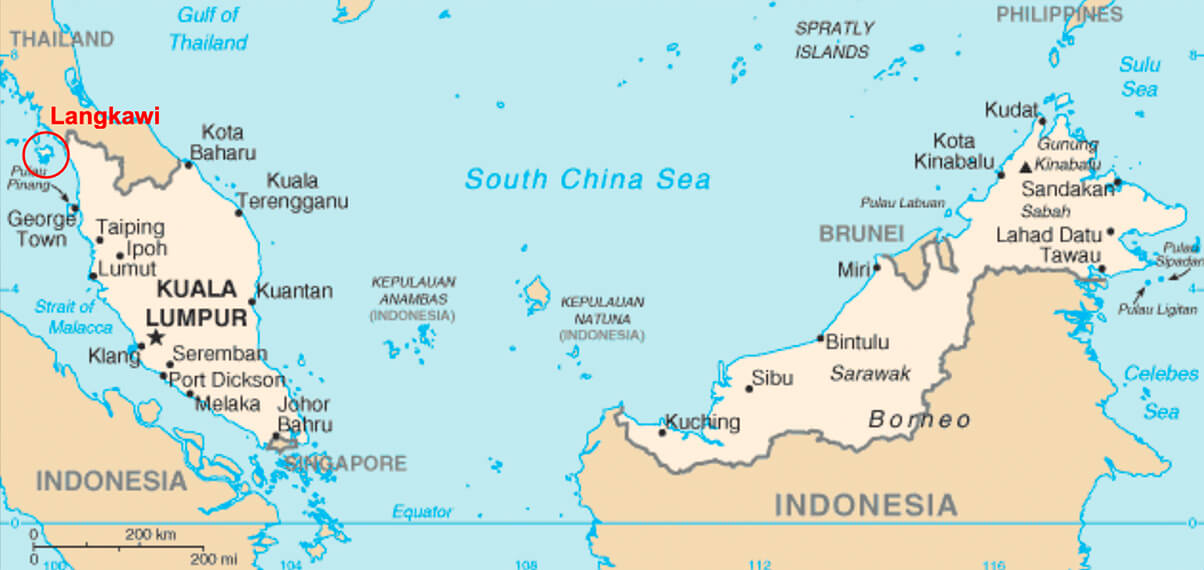
The massive influx of tourists has brought income to the locals, yet this destroys the beauty and balance in nature which in turn makes the islands a less favourable place to visit. Currently, 70% of employment relies on tourism and this information is crucial when prioritising sustainability in tourism. Finding a solution to address this nature vs. socioeconomic challenge is direly needed.
While the main island of Langkawi gets all the spotlight, there are other islands that worth the shine too. Separated by a strait, Pulau Dayang Bunting and Pulau Tuba are the second and third largest islands in the Langkawi archipelago. Only a 10 to 15 minutes boat ride away from the Langkawi island, these two islands give off different charm. On Pulau Dayang Bunting, the Dayang Bunting Marble Geoforest Park, one of the three geoforest parks in Langkawi UNESCO Global Geopark, spans across 8,261 ha – the spectacular scenery on the island speaks for itself, attracting tourists to adore its beauty from land, the lake to the sea. Lives on Pulau Tuba, on the other hand, feel like fishing villages from decades ago adorned with lush nature.
Like gems waiting to be discovered, the slower-paced lives on the two islands are in the midst of catching up. Yet, how can both the islands grow sustainably in the process? How to ensure that socio-economic development aligns with conservation and sustainable use of natural resources? How to preserve the intrinsic value unique to the people residing on the islands? How accepting are the island communities with embracing changes moving forward? These are some of the questions worth pondering when making geopark tourism in the entire archipelago a success.
Making a living on the islands
There are around 414 residents on Pulau Dayang Bunting and 1472 residents on Pulau Tuba. Together, there are less than two thousand locals on both islands. There are slightly more men are than women. A study in 2019, sampled from 100 respondents, shows that 82% of the families on the island earn less than RM1500 per month. A total of 40% of the household earn below RM999 – around the poverty line income for Peninsular Malaysia which is RM980. Even compared to Kedah state’s average of RM4778 for a household of two, the income level of the people on the island is still very much lower than that.
On average, men earn more than women. This is also owing to the fact that most women are housewives. Many of these housewives also follow their husbands to fishing or have side hustle such as looking after children of working parents or selling food items. There has yet to be a more holistic and exact census on the income level of the islands’ inhabitants. However, the numbers mentioned earlier paints a rough picture of how lives are like on the islands. With these numbers in mind, we can better gauge where will sustainable development leads to the livelihood of the people there.
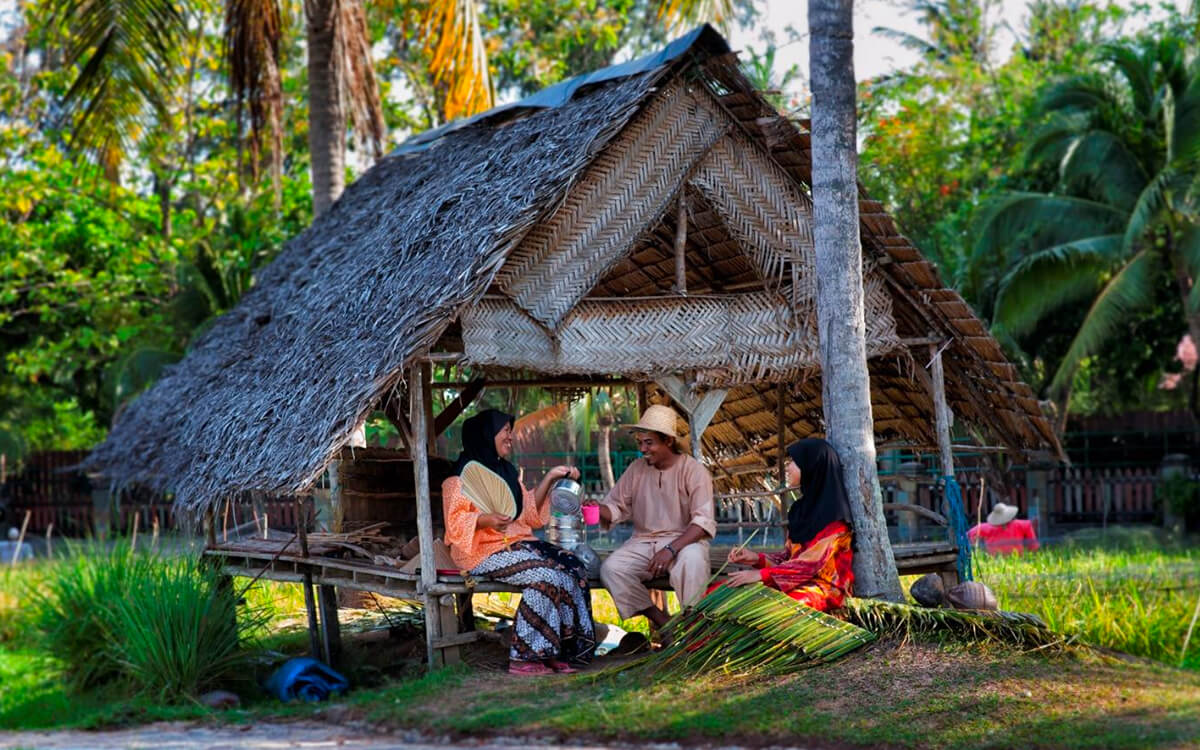
Despite below poverty level, most of them are living in good conditions or are happy with the conditions of their homes. One of the context worth noting is that the cost of living in villages is way lower than the average urban living. Also, the level of happiness and living condition satisfaction is subjective to individuals. The idea of content living might not be associated with income level for some. Locals have the skills to build houses and do carpentry works. Some of them can even build temporary rafts and floating houses. This skillset nevertheless makes living comfortable. From a physical perspective, they are contented with what they currently own. Having the ability to enhance their homes significantly helps with that.
Yet, this is not the only way to look at poverty. The physical aspects are not a safety net to cushion them from any monetary stress. How the residents view survival tells a slightly different story. More secure cash flow is something anticipated among communities. Conversation with them reveals that most of them could survive less than a week in the event of income loss. In some instances, the state and welfare providing agencies identify those who needed financial assistance and help them through hardships while monitoring their progress.
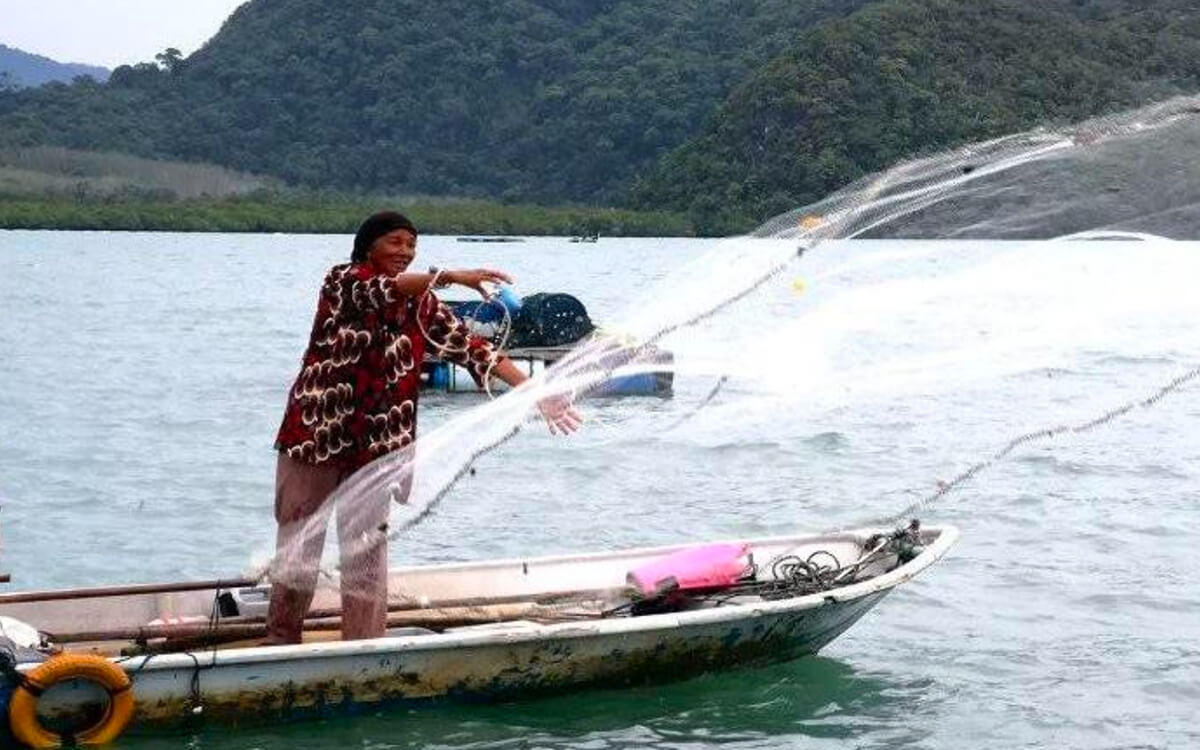
Langkawi has an agro-centric economic structure before the tourism boost in the ‘80s. Fisheries still play a crucial role in the employment of the locals on Pulau Tuba. The scene of tenacious fishers who are still out at sea even way beyond the national retirement age is still very prevalent. Although coined as fishing villages, the residents pick up a lot of other jobs as well. The diversification of livelihoods seems to be inevitable when they see more opportunities arise. Manual jobs, including professional cleaning companies, security firms, contract gardener, ship’s crew, are some of the more common occupations among the community. Some of them have their businesses done on a smaller scale such as trading snacks or deserts, apparels, cosmetics, salted fish or providing tailoring services.
The rising numbers of tourists to the two islands also means that the residents are taking up the part of the pie by providing boat or van services to tourists. With their knowledge of the local landscape, some of the Tuba residents also bring tourists on guided sightseeing trips around the island. These touring deals are usually done at the jetties of the islands – a hotspot for the booming industry.
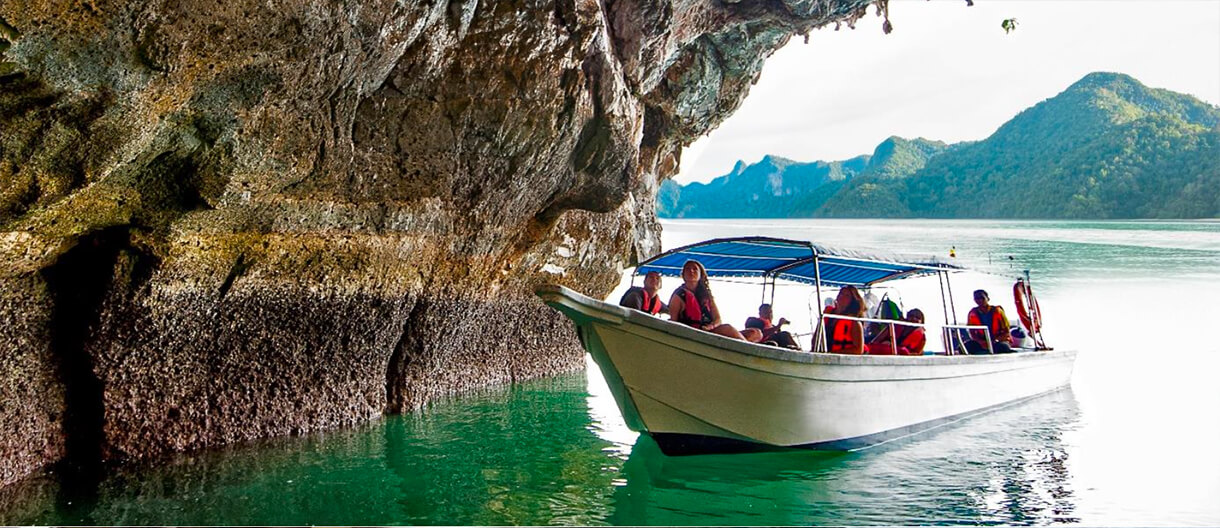
Another component that comes along with the growing tourism scene is the fast-expanding homestay programme. Started in late 1990, after going through a shrink at the beginning years, the programme is now very well received and revived to involve at least 30 families since 2018. The homestays were popular among educational institutions such as high schools and universities. The experience they get from the tranquillity of the islands, as well as the diverse natural environment, makes hands-on learning much more interesting and memorable. The interaction with the hosts also enhances their experience. Along with that, some locals also provide educational tours to mangroves and snorkelling sites.
This programme is something that the locals want to do. This enthusiasm will definitely fuel the programme much further. The potential of the homestay programme can be refined and elevated to a greater scale. However, before coming to that point, several fundamental issues are still yet to be looked into especially from a holistic point of view. Sustainable expansion of homestay in terms of infrastructure, human resources and management needs to be addressed. This includes repairing and maintenance of houses and training of locals with hospitality skills and tourism knowledge. The entire improvement comes in a package – from creating extrinsic value in terms of job opportunities and infrastructure to intrinsic value that includes a sense of belonging to the place and heritage knowledge.
On a similar note, the issue of land use comes into the picture. Some plots of land were bought by people from Langkawi and Kuala Lumpur. This land transfers open to the possibility of elite capture of land distribution, where certain public areas such as beaches can only be privately accessed by the landowner. Land use and planning need to align with the sustainable development goal of not leaving anyone behind. While that include the local communities, zoning for conservation and other needs should also be involved in the conversation. Ultimately, a land-use plan that benefits all stakeholders of the island is the most important element.
Use of Natural Resources
Seafood is one of the main sources of food and income for the people on Pulau Tuba. Fisheries Development Authority of Malaysia estimated the fish landing from 2016 to 2018 to be close to RM1.1 million – a significant contributor to seafood production in Langkawi. Pulau Tuba is also one of the biggest producers of cuttlefish in Langkawi. All these production credits to the hard work of around 308 fishers, who are the registered members of the Fisherman’s Association of Langkawi – Tuba and Selat.
Moving onwards to land, forests provided the community with traditional medicine. The use of traditional medicine has become an important aspect of life for them. A plethora of plants are used for maintaining health and curing diseases. Every part of the plant is useful for traditional treatment – leaves, shoots, bark, roots, flowers and branches. Traditional healers use only forest produce for treatments even when marine resources are readily available in the vicinity. The healers are using these traditional medicines to mostly cure fever, skin conditions and internal diseases.
The use of wells is also prevalent on the islands even though clean pipe water is available. Some of the wells on Pulau Tuba might be used for rice irrigation. However, these wells were abandoned as the growth of organic rice could not gain enough local interest and support. Otherwise, wells are kept mainly for drinking. Having the misunderstanding that treated water is mixed with chemicals, the villagers use piped water for bathing and washing instead, even though the water supply system is supposed to provide clean and safe drinking water in replace of well water. The monitoring and assessing of well water quality are still not in place and when left unchecked, well water brings potential health risks to the people.
Knowledge within and beyond classrooms
Formal education for people on the islands is the institutionalised learning that follows Malaysia’s education system with primary school education made compulsory. Focusing on secondary education, there is only one high school in Pulau Tuba – SMK Langkawi. Compared to the university entrance exam, STPM, students on the islands prefer to build their skills in a certain field by attending vocational colleges. In a way, they can enter the workforce faster with relevant techniques and knowledge.
As for the parents, most of them express disappointment with the schools. The dissatisfaction comes from poor grades, high drop-out rates and overall low level of achievements of students. The lack of extracurricular activities also means that students missed the opportunity to build their soft skills and explore their interests. From the students’ point of view, there are still quality and enthusiastic teachers who truly motivate them. The low percentage of students who managed to pass SPM, the secondary school national exam, is a worrying trend for parents as well.
Noticing the small improvement in grades between years, the teachers are still hopeful to aim for better overall performance. On the other hand, parental role in guiding their children’s progress is also important but they lack the capacity even if they want the best for their children. A bridging programme at promoting networking among parents, between parents and teachers, as well as linking students with other schools will be able to provide students with a different kind of exposure and eventually brings to better performance.
Community knowledge about Geopark is still rudimentary, ranging from complete incomprehension to listing some of the tourism aspects of the geopark. The award of UNESCO Global Geopark status to the Langkawi archipelago in 2007 has yet to ingrain stewardship in people on these two islands. This status is exclusively granted to sites and landscapes with significant geological values, in Langkawi’s case, the abundance of Palaeozoic (540 million to 250 million years ago) geological record in the region. The concept of the geopark is holistic, with the inclusion of nature protection, education and sustainable development. Utilizing a bottom-up approach, public consultation is often taken place to encourage local participation in the geopark. A more robust effort to consult communities on the rest of the satellite islands is equally important. Thus, there is a need to inspire local communities to involve in creating heritage values through the dissemination of information and knowledge about history. Only with the sense of ownership of this heritage, the geopark can be a successful tourism driver for the villagers.
There is a high potential to develop tourism sustainably as the residents are aware of the need to manage resources locally. They prefer to manage the packaged tours to the island on their own, which include tours around mangroves, caves, forests and swimming spots. Coupling this willingness with better knowledge about the heritage of the islands is crucial to promoting the place from the lens of the locals.
Catching sight of the future
The residents prefer a bottom-up approach when it comes to development. In this case, the opinion of the community needs to be taken seriously into consideration – a truly community- based project development. Previous top-down development has attracted little support from the community and was brought to a halt, such as organic rice farming. This type of decision process often neglects local voices. Some programmes do gain support from residents, especially the young entrepreneur’s programme that provides youth with grants to start up their businesses. The monitoring system and support also helped businesses thrive and grow. The local group is also supportive of the idea of community-based management of natural resources. The community cooperative had initiated three livelihood projects to grow green lip mussel, seaweed and mussels. The cooperative also helped with the administrative and management side of the homestay programme. Any future development should always include residents’ opinion into the picture.
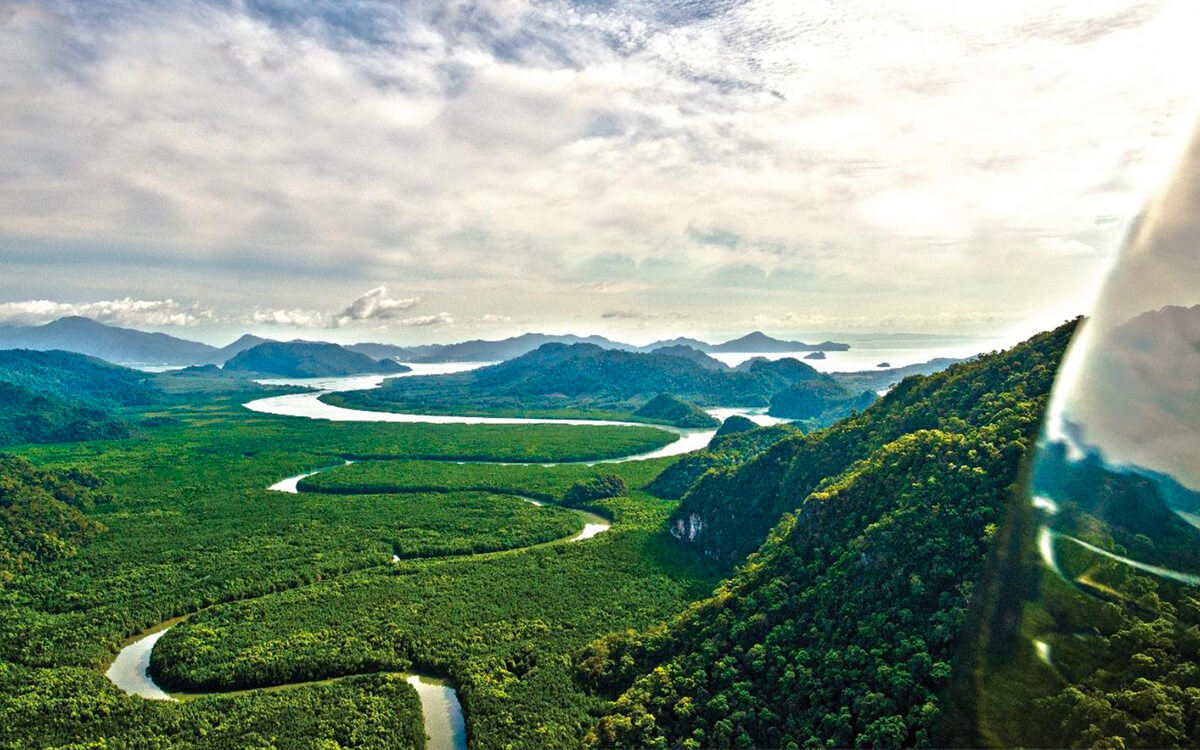
Tourism proved to kindle diversification of livelihood among youths and certain degree, the middle-aged. Yet, the exact nature and extent of underemployment despite increased job opportunities needs to be investigated. This issue is also linked to the little upward mobility among the community. A better model for community participation that involves appropriate economic concepts and activities should be considered as well. Concerning geotourism, the geological and cultural heritage of the islands is important. Through substantial participation in community-based resource management, local communities can be better equipped with such knowledge and have a sense of ownership towards the heritage. Similarly, formal and informal education, when planned properly, could create intrinsic value and add more dimension to the development of the islands.
Putting everything together, the future of Pulau Tuba and Pulau Dayang Bunting should leave no one behind. This principle resonates with the emphasis on sustainability in geopark tourism. Socioeconomic development that is more participatory, inclusive and economically productive will be the next theme for the two gems. This step forward should also consider the protection of geological resources. By cultivating a sense of pride in the land and sea they live through innovative entrepreneurship, job creation and excellent training courses, sustainable geotourism will reinforce their identification with the area. With the breath-taking landscape of limestones, mangroves and the rest of the wonders, the development should be on par with the beauty of the two islands and complements the growth on the entire Langkawi archipelago.
Contact:
About Langkawi Development Authority (LADA)
Langkawi Development Authority (LADA) was established by the federal government to plan, promote and implement development on the island of Langkawi. LADA was officially established on March 15, 1990 under the Langkawi Development Authority Act 1990 (Act 423) and placed under the authority of the Ministry of Finance.
For further details, please visit www.lada.gov.my or visit www.naturallylangkawi.my
Langkawi Development Authority, LADA
Tel : 04-9600600
Faks : 04-9661019
Email : [email protected]

